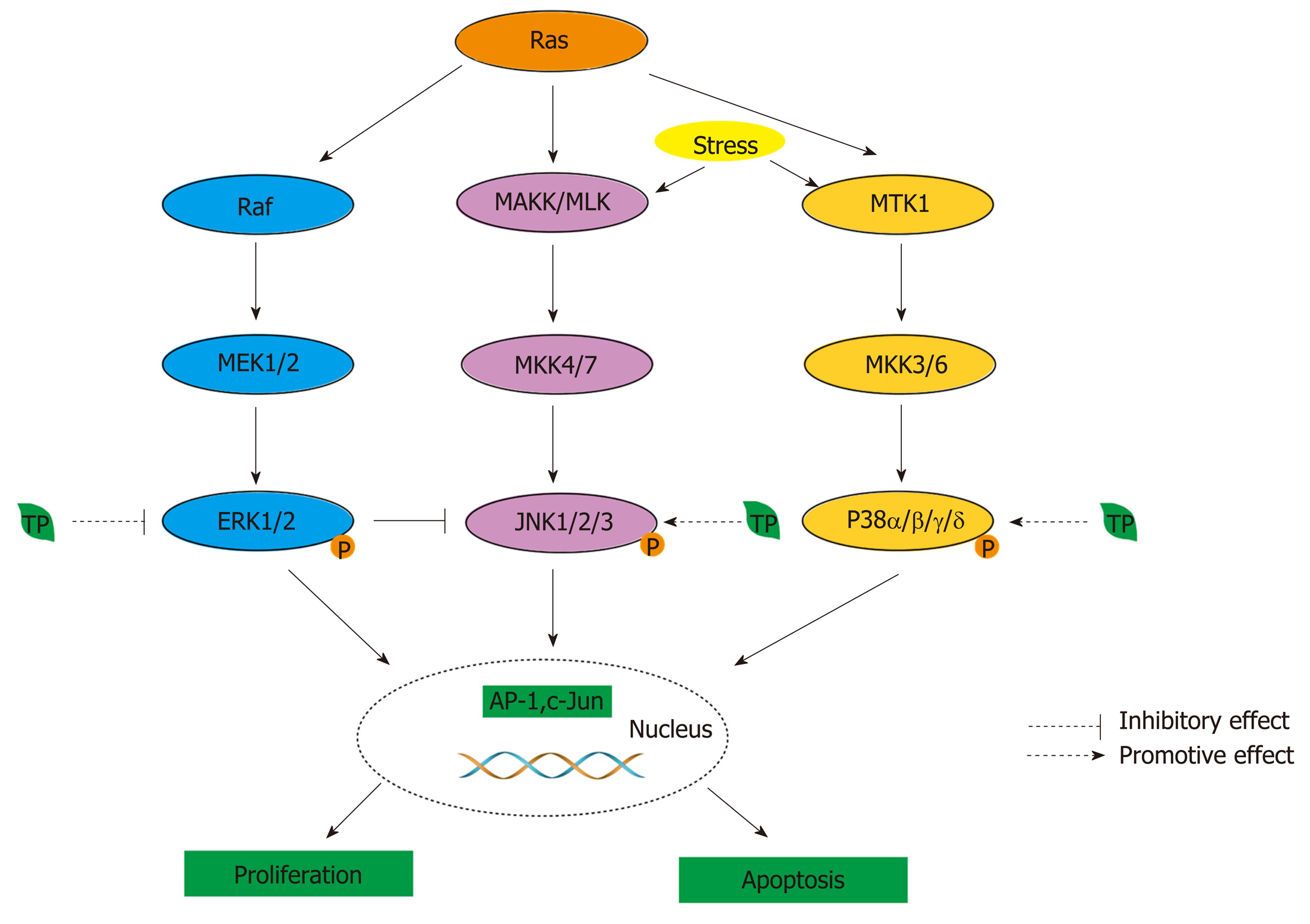Copyright
©The Author(s) 2020.
World J Gastroenterol. Feb 14, 2020; 26(6): 562-597
Published online Feb 14, 2020. doi: 10.3748/wjg.v26.i6.562
Published online Feb 14, 2020. doi: 10.3748/wjg.v26.i6.562
Figure 4 MAPK activity is regulated through three-tiered cascades composed of a MAPK, MAPK kinase (MAPKK, MKK, or MEK), and an MAPKK kinase or MEK kinase (MAPKKK or MEKK)[190].
Four groups of MAPKs are extracellular signal-related kinase (ERK)-1/2, Jun amino-terminal kinase (JNK1/2/3), p38 proteins (p38α/β/γ/δ), and ERK5, which are activated by specific MAPKKs: MEK1/2, MKK4/7 (JNKK1/2), MKK3/6, and MEK5, respectively[190]. MAPKKKs, the upstream targets of MAPKKs, contain Raf in the ERK pathway, MEK kinase (MEKK) and mixed-lineage kinase (MLK) in the JNK pathway, and MTK1 (or MEKK4) and apoptosis signal-regulating kinase 1 in the p38 pathway. Moreover, phosphorylated MAPKs can activate transcription factors, such as AP-1. Tea polyphenols (TPs) can modulate MAPK pathways. In the ERK pathway, TPs can inhibit the activity of transcription factors, such as AP-1, by inhibiting the phosphorylation of ERK1/2. In the JNK and p38 pathway, TPs can promote the activation of JNK1/2 and p38 to induce cell death. In addition, the blockade of ERK can also lead to the activation of the JNK pathway.
- Citation: Wang ST, Cui WQ, Pan D, Jiang M, Chang B, Sang LX. Tea polyphenols and their chemopreventive and therapeutic effects on colorectal cancer. World J Gastroenterol 2020; 26(6): 562-597
- URL: https://www.wjgnet.com/1007-9327/full/v26/i6/562.htm
- DOI: https://dx.doi.org/10.3748/wjg.v26.i6.562









